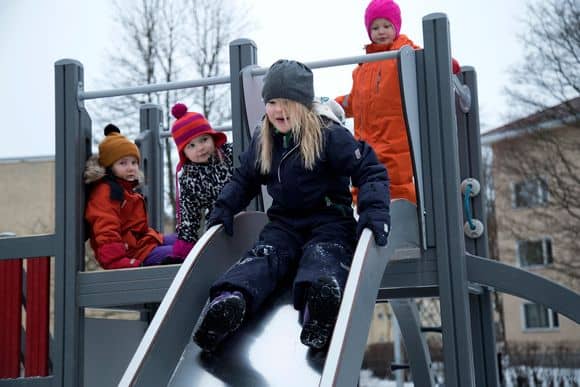
Girls get less exercise than boys at kindergarten
Interesting findings have been revealed in a new study in Finland of 3-6-year-old children. The study found that girls spent less time exercising than boys. Researchers studied some 800 children and the results may have significant health effects in the long run. Girls get less exercise than boys. According to these findings from a study of 800 children. (The Dagis study of pre-schoolers in Finland) Looks for energy balance-related behaviours in kids aged from 3 to 6 years. The children wore activity trackers for a week at their kindergarten. Girls were found to move less than boys. The difference was especially evident in the levels of vigorous exercise, with boys accumulating some 56 minutes per day and girls performing just 46 minutes. Although the difference each day is not that great, it can add up to become a significant deficit over longer time periods. More
The observation that girls get less exercise than boys in kindergarten is supported by a growing body of international research. This disparity begins early and can have long-term implications for health, development, and confidence in physical activity. Here’s a deeper look at the issue:
Key Findings from Research
- Lower Vigorous Activity in Girls: A Finnish study of 800 children aged 3–6 found that boys engaged in about 56 minutes of vigorous activity per day, while girls averaged only 46 minutes. This gap was most pronounced during structured daycare hours, not at home.
- Global Patterns Confirm the Trend: A multi-country study using accelerometer data from over 15,000 children found boys had 38% higher levels of moderate-to-vigorous physical activity (MVPA) than girls. Boys also showed greater variability in activity levels, suggesting more boys engage in high-intensity play.
- Preschool as a Crucial Setting: In Norway, researchers found that boys were consistently more active than girls during preschool hours. Interestingly, the gender gap in activity was larger during school hours than at home, suggesting environmental or social factors at play.
Why the Gap Exists
Several factors contribute to this early gender disparity:
- Social Norms and Play Preferences: Boys are often encouraged or allowed to engage in rough-and-tumble, high-energy play, while girls may gravitate toward or be steered into quieter, more sedentary activities.
- Programme Design Bias: Many physical activity programs are unintentionally tailored to boys’ interests (e.g., competitive team sports), making them less appealing to girls.
- Peer and Adult Influence: Girls are more influenced by peer dynamics and adult encouragement. If they don’t see role models or friends participating in active play, they may opt out.
Why It Matters
- Health and Development: Physical activity in early childhood is linked to better motor skills, cognitive development, and long-term health outcomes. A deficit in activity during these formative years can have lasting effects.
- Confidence and Competence: Girls who are less active early on may develop lower physical confidence, making them less likely to participate in sports or active play later in life.
What Can Be Done
To close the gap, interventions should be intentional and inclusive:
- Design Inclusive Activities: Offer a variety of movement-based activities that appeal to different interests—not just traditional sports. Stretch-n-Grow is a classic example of an activity class that appeals to both sexes.
- Engage Parents: Encouraging parents—especially fathers—to support and participate in their daughters’ physical activity can boost motivation and confidence.
- Promote Active Travel: Walking or cycling to school has a disproportionately positive impact on girls’ overall activity levels.
Would you like help addressing this gender gap in your setting? Contact us Stretch-n-Grow is a Worldwide Programme




